Engagement Rings
Buying Guide
Buying Guide
Welcome to our engagement rings guide, this will help you search for the perfect ring for your loved one. Engagement rings will be worn for a life-time, so it is important to choose the right style and metal colour. In this guide, we will talk you through everything you need to know about picking the perfect engagement ring.
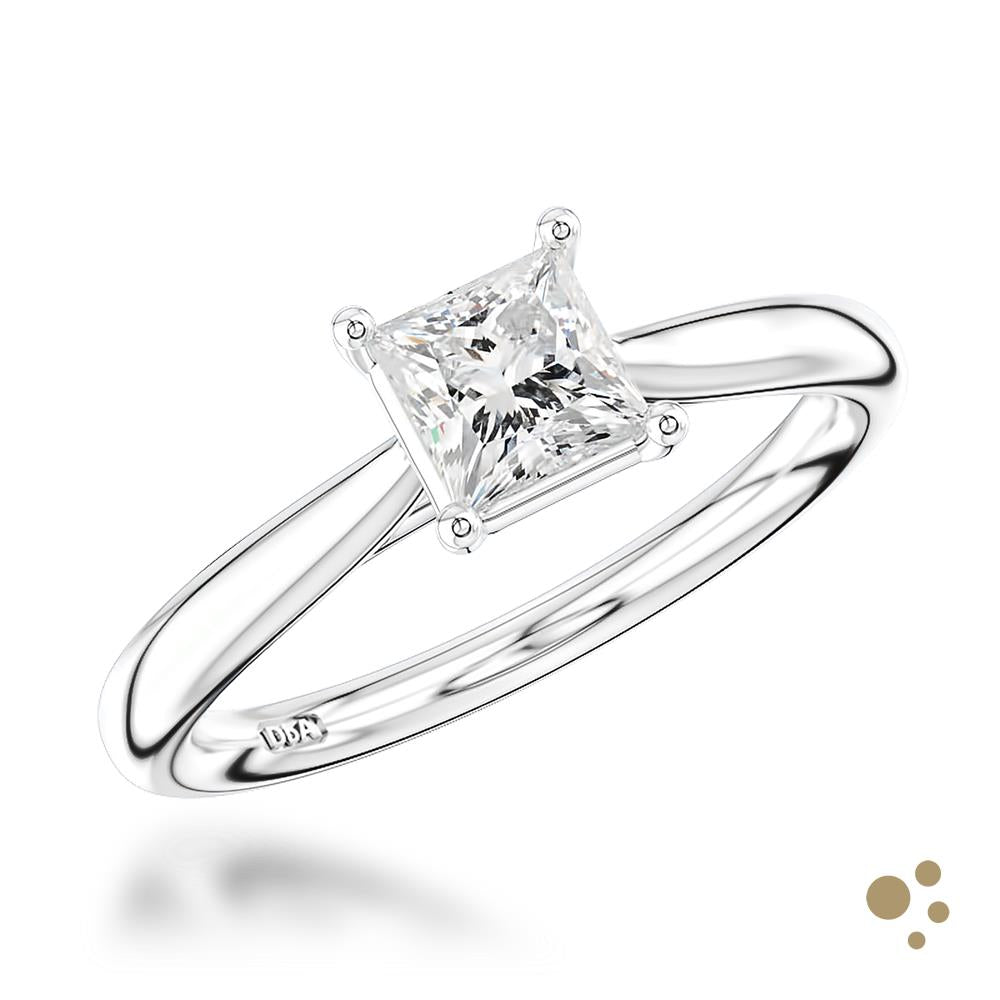
Solitaire rings have a single central diamond or gemstone. This is the most traditional style of engagement ring with traces back to the Ancient Roman times.
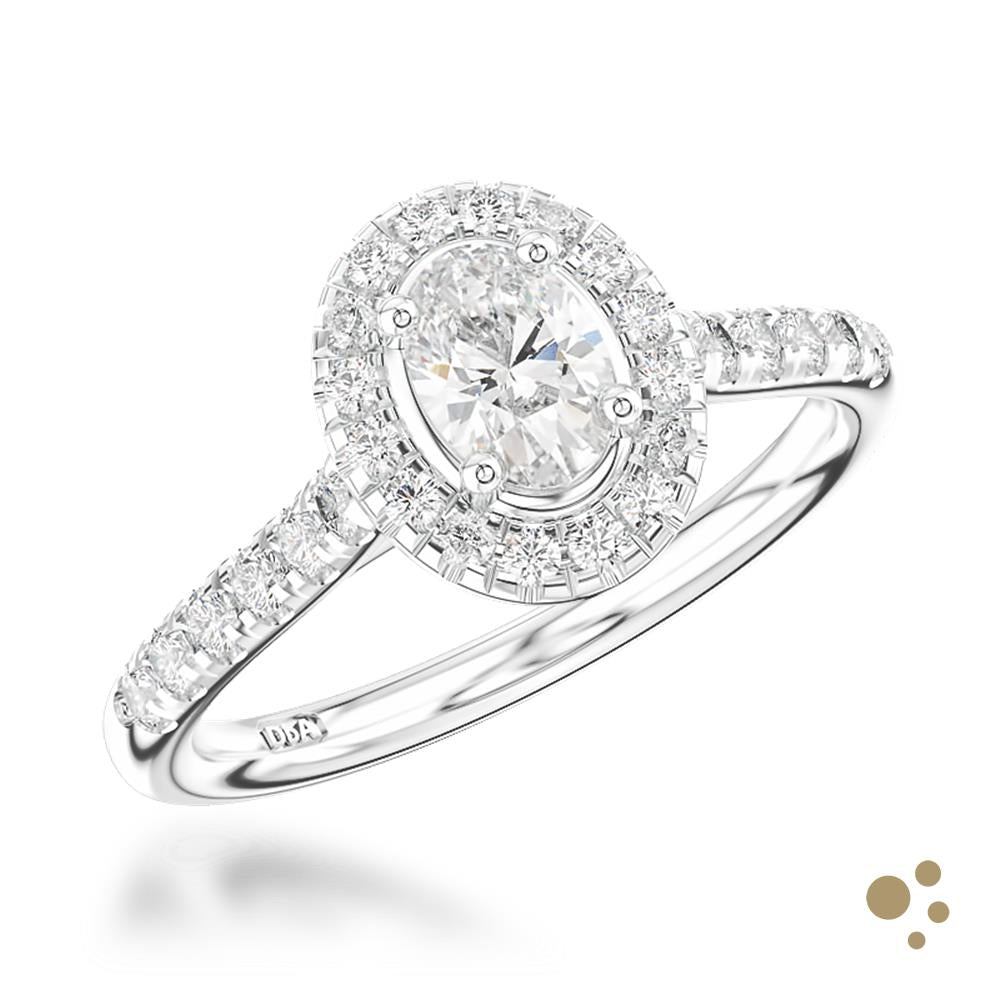
Halo rings feature a central diamond or gemstone surrounded by other gemstones but typically diamonds. This draws more attention to the centre piece and makes it appear larger.
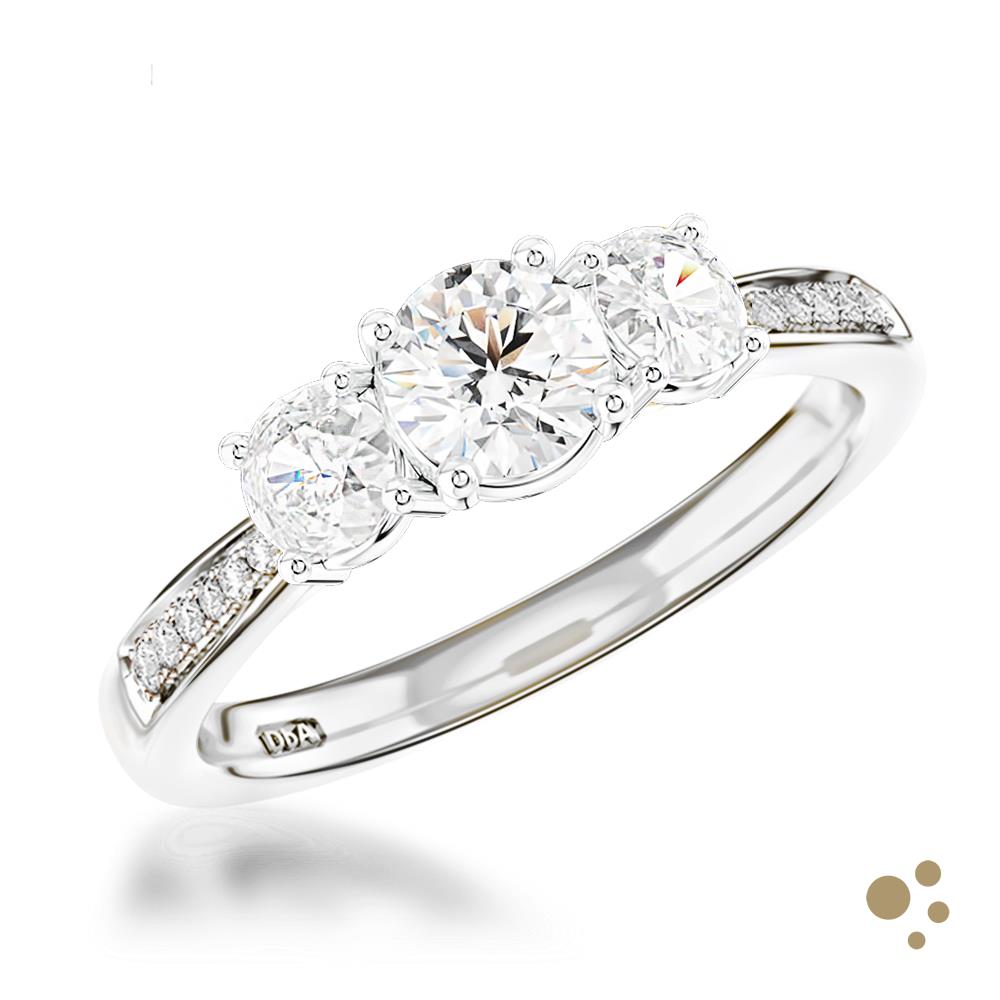
Trilogy rings are a cluster of three stones set along the top of the ring. The central stone is often larger with two identical stones next to it. These gems symbolise the past, present, and future.
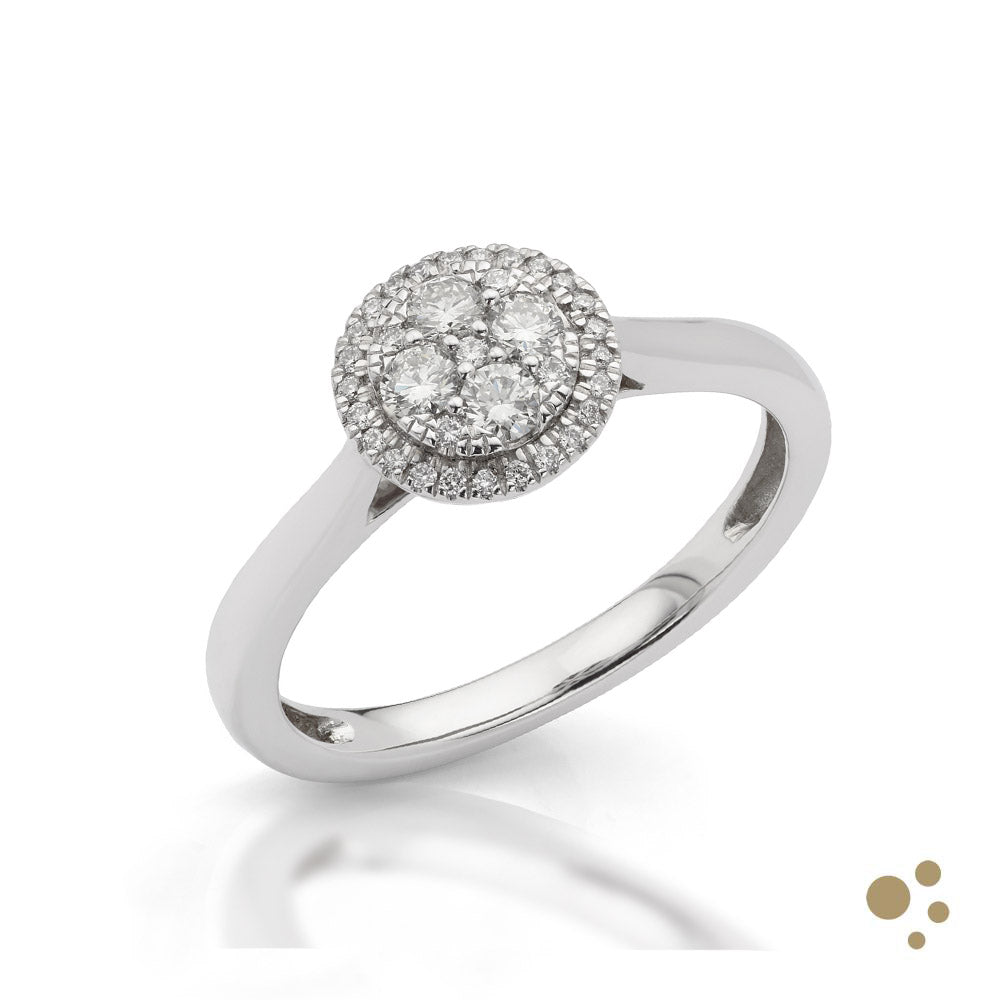
Cluster rings, often mistaken as halo rings, feature groups of gemstones together, often with one larger stones in the centre that can appear to be one large diamond.
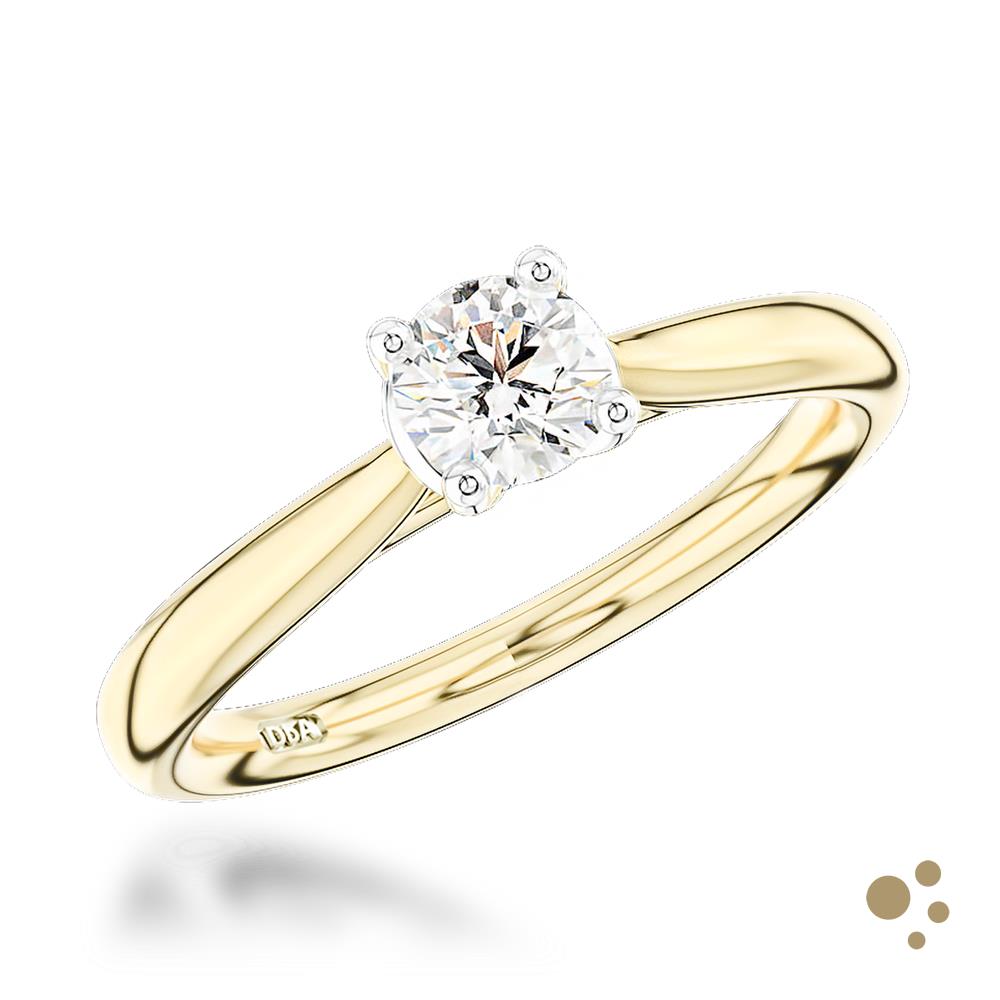
Yellow gold is a classic metal for engagement rings with its hypoallergenic properties and warm colour. This is becoming an increasingly popular choice.
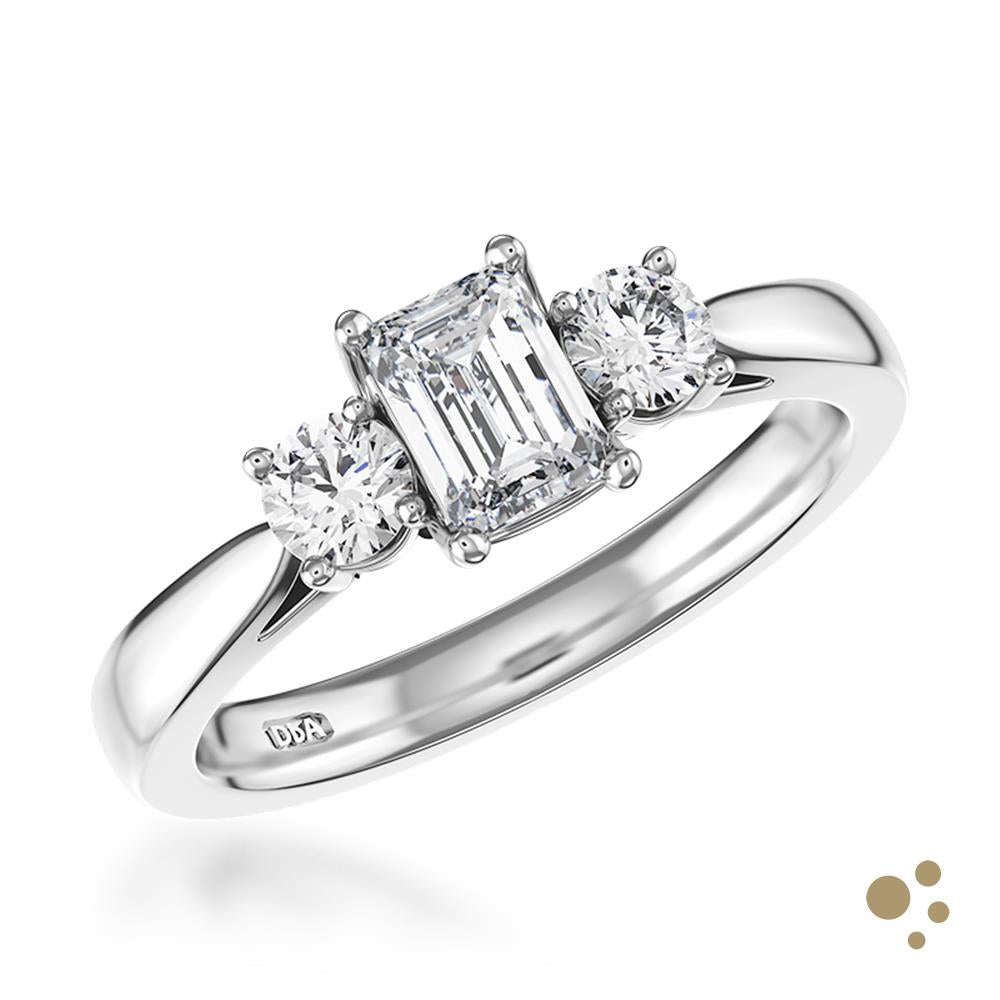
White gold has the same colour appearance of platinum and silver. This metal does not rust and makes a beautiful ring that will match with any outfit.
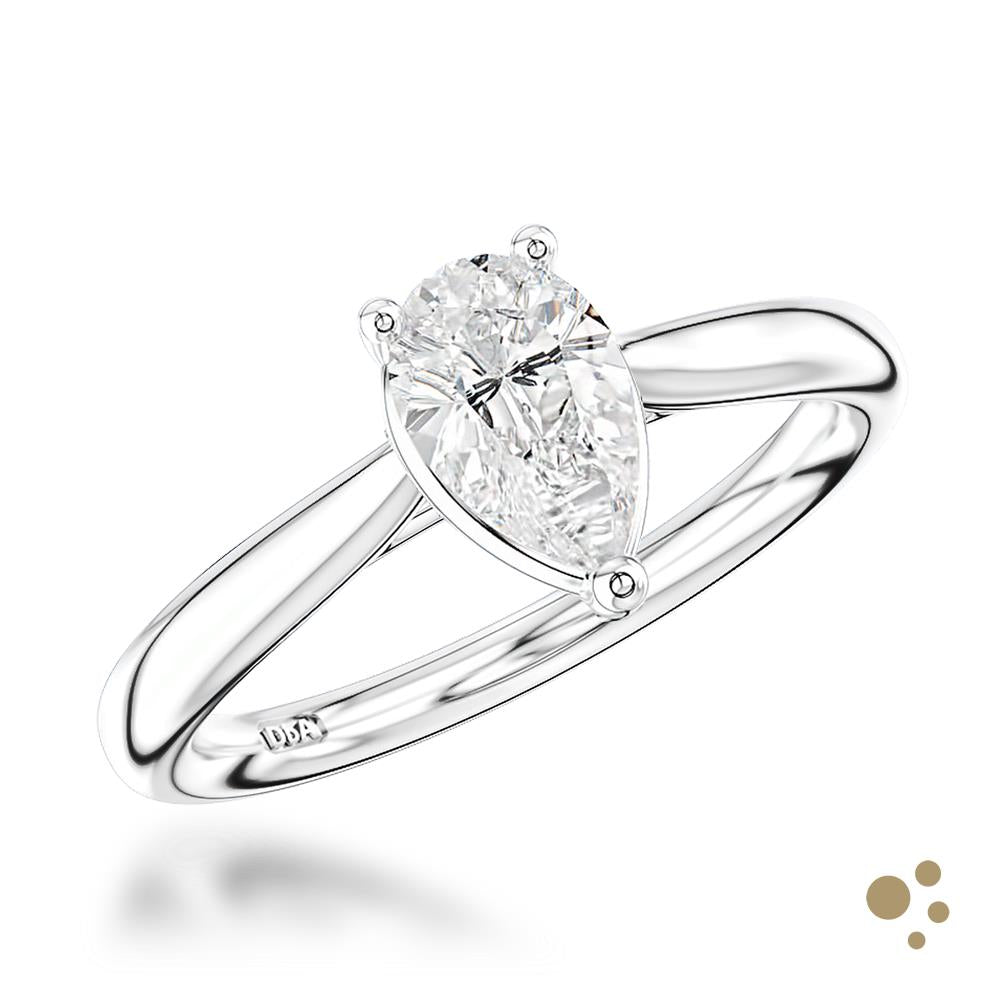
Platinum is an extremely hard-wearing and very durable precious metal which is perfect for everyday wear. It has become a very popular choice in recent times.
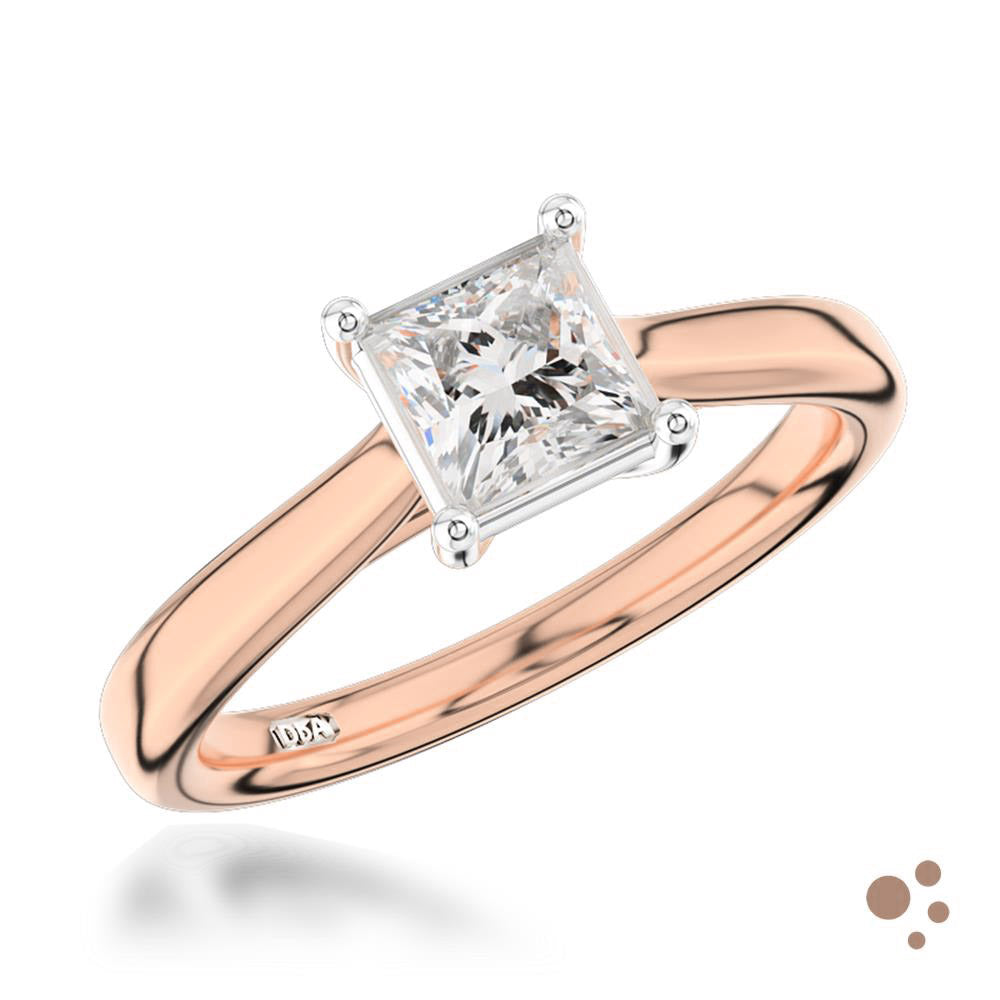
Rose gold is the most durable colour of gold due to being mixed with copper. This gives this precious metal its pink colour.
A diamond has an organic rough form when it is first mined. A craftsman will then intricately cut and polish the raw material into the specific shape for your ring. The most popular shape is the brilliant round diamond, however, diamonds can come in many 'fancy shapes' such as oval, emerald, princess and marquise. These are three of the most popular diamond shapes:
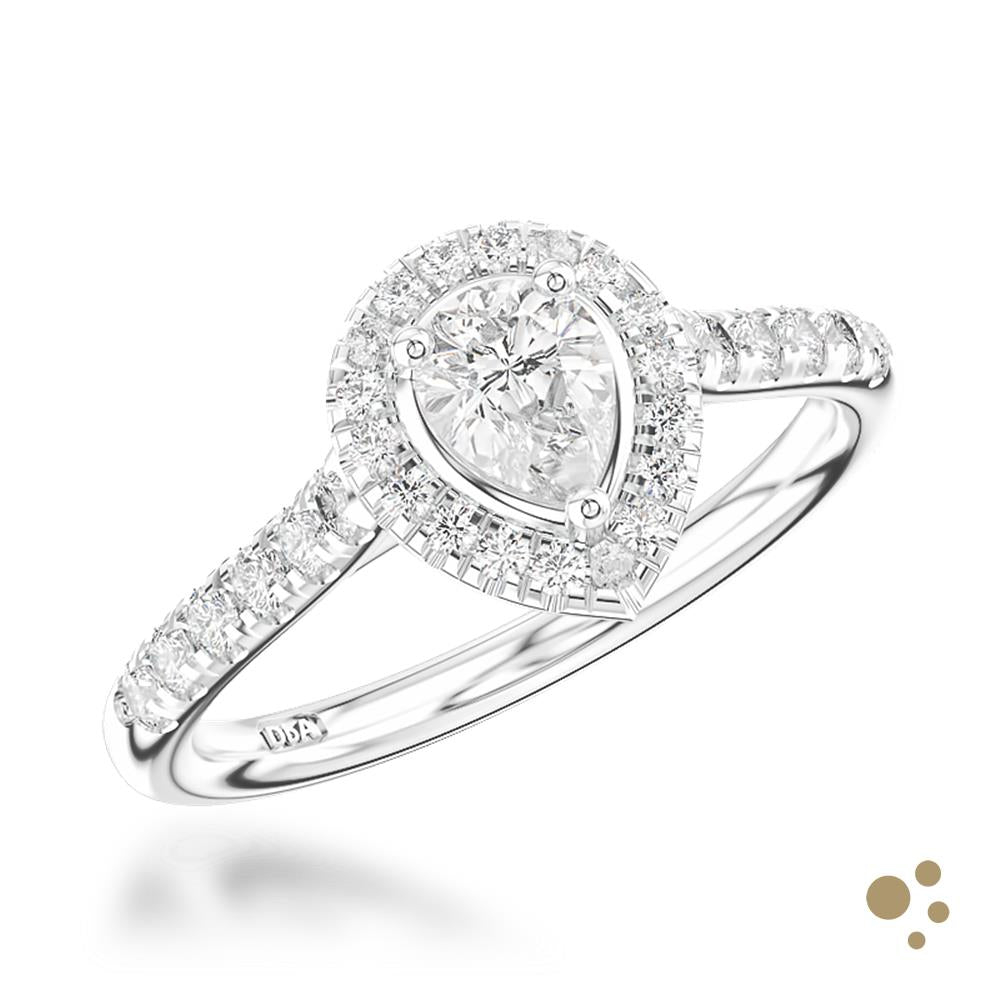
The pear shape features characteristics from the brilliant diamond. This option flatters the majority of finger shapes.
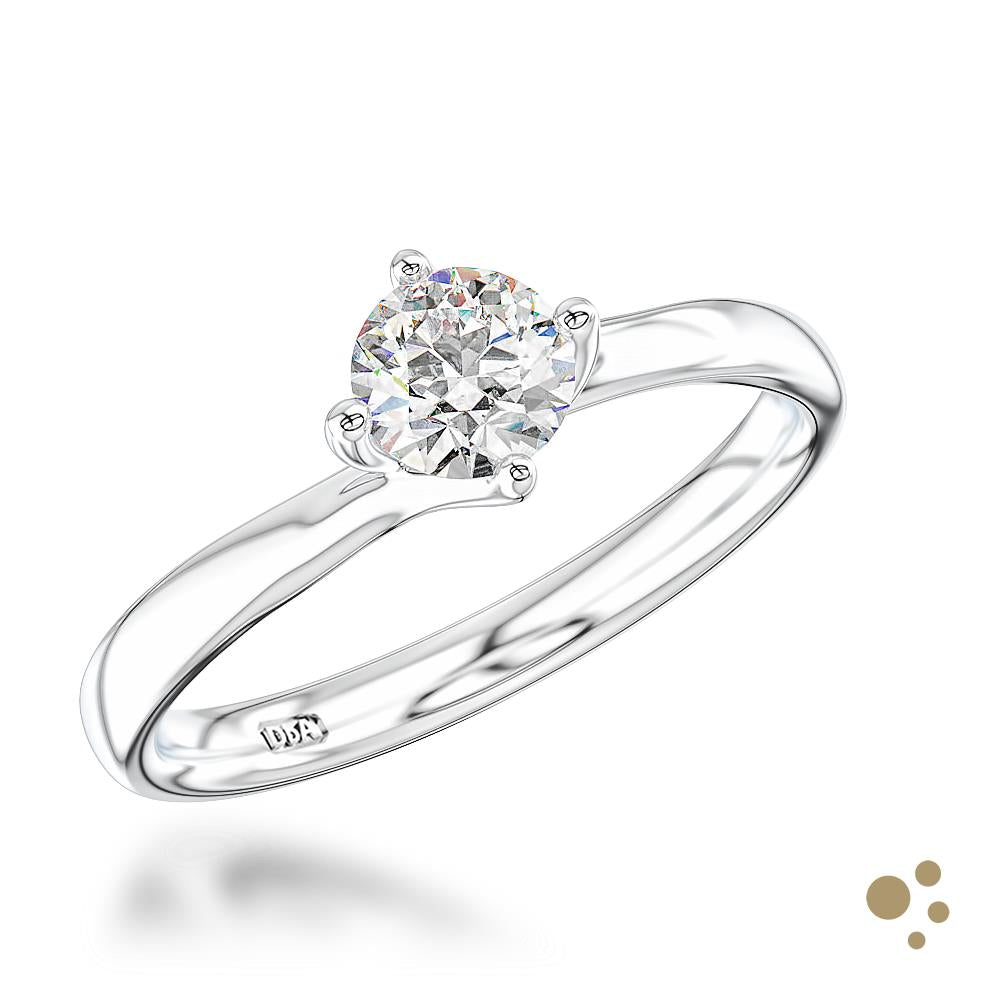
The brilliant round is the most popular diamond shape. This is a perfect choice to maximise brilliance and sparkle.
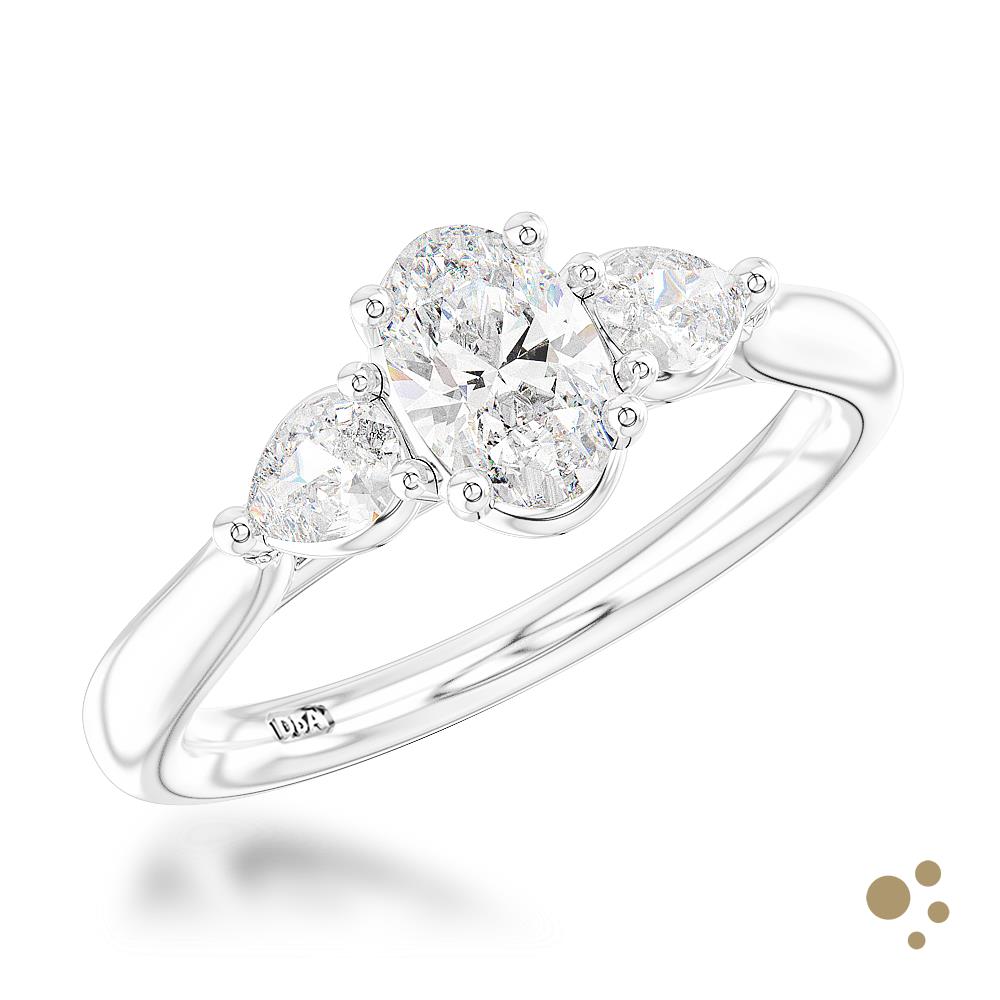
The oval shape is a modern alternative to the brilliant round diamond. This cut makes the diamond appear larger.
If you're looking for a more unique engagement ring, then a coloured gemstone might be perfect for you. There are lots of great options for a coloured gemstone engagement ring, with emerald being a very popular choice closely followed by sapphire and ruby.
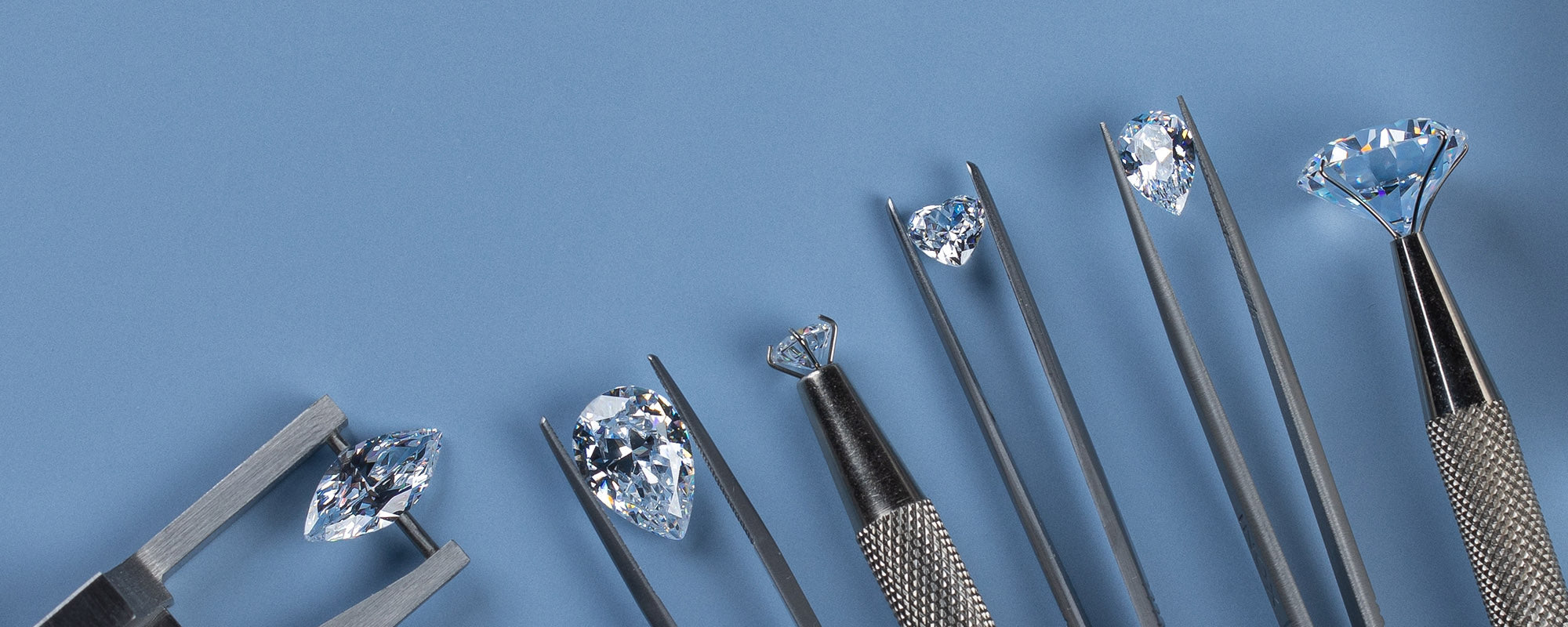
Diamond Shapes
The diamond shape refers to the form and geometric appearance of the diamond. This affects the piece's personality and is a personal preference of which of the 12 shapes you choose.
The 4C's relate to the Cut, Colour, Clarity, and Carat of a diamond. These are the key qualities of a diamond's composition and determine the stone's desirability.
Precious metals are rare and valuable naturally occurring elements that are used commonly in 'fine jewellery'. There are eight precious metals including gold, silver, and platinum.
Discover our range of products online or visit our Swindon showroom to see it in-person. Alternatively, book a consultation to speak to one of our experts one-on-one, and find out more.
Can't find what you're looking for? With our bespoke jewellery service you can create a one of a kind piece that is suited to your preferences. Find out more about our bespoke jewellery service and book your consultation today.
Our bespoke service also enables you to use any component such as a gemstone from a family heirloom and design it into your engagement ring. This means that you can wear a piece of your family's heritage everyday and make it have an extra special meaning.
Engagement Ring FAQs
Engagement rings are a symbol of love and a promise to be together forever. In this FAQ guide, we'll answer some of the most common questions about engagement rings and help you to make an informed decision.
An engagement ring should fit tightly so that the centre gem sits in place but not too snug that it reduces circulation. It should slide onto the finger with ease while still having a slight resistance as it passes over the knuckle to ensure a correct fit.
Engagement rings are commonly worn on the left hand in the UK however other countries such as India, Germany, and Norway wear them on the right hand.
Wearing an engagement ring and wedding ring on the fourth finger of the left hand comes from a tradition tracing back to the Ancient Romans. They believed that there was a vein running from this finger directly to the heart which they called the 'vein of love'. This was thought to allow your partner to be closer to your heart and make your love and commitment last longer.
Matching the metal of your wedding ring with your engagement ring is a matter of personal preference, but it's not necessary. You can choose a different metal for your wedding ring that complements your engagement ring, or mix and match different metals for a unique look. 18ct Rose or Yellow Gold can have a slightly different colour to 9ct Rose or Yellow though. It's worth a trip to our store in Swindon to have a look at our current samples to see what looks best with your engagement ring.
Although it is better to get the correct size engagement ring, it can be corrected after purchase if it doesn't fit. Rings can be re-sized for many reasons such as for changes in the size of the finger over-time or when buying the ring as a surprise and you make an incorrect guess.
Downsizing a ring involves cutting part of the ring out and re-shaping it into a perfect circle whereas, upsizing a ring involves stretching the band of the ring out so it will fit your finger. However, this will thin the band out and a jewellers will be able to advise you on other options if either of these aren't possible.
Wedding rings are a symbol of love and commitment that you will wear for a lifetime. Whether you're looking for classic and timeless rings or something more unique and modern, Deacons have you covered.
Whether you're looking for a wedding gift, attending a wedding, searching for bridesmaid gifts or cufflinks for the groom and groomsmen or looking for jewellery for your own wedding, we have a range of styles to suit everyone.